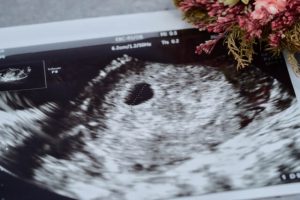- Fetal dock (fetal ultrasound) is a detailed examination of the baby using ultrasound
- What a fetal dock (fetal ultrasound) can tell you and how much it costs
- Advantages and disadvantages of fetal docking (fetal ultrasound)
- Differences from other prenatal tests
- NIPT covers the disadvantages of foetal docking
- NIPT for diseases not detected by 4D echo
- What NIPT can do for your baby
- Hiro Clinic NIPT does not require a referral
- NIPT at Hiro Clinic NIPT can be performed at any age
- Hiro Clinic NIPT is a domestic test, so results are quicker
- NIPT can be easily booked online
- Hiro Clinic NIPT also offers specialist online medical care
- Positive score of Hiro Clinic NIPT independent analysis
- NIPT at Hiro Clinic NIPT, where tests start at JPY4.88 million
- What is the Hiro Clinic NIPT single chromosome test?
- NIPT for diseases not detected by 4D echo
- Summary
Fetal dock (fetal ultrasound) is a detailed examination of the baby using ultrasound
Pregnancy is a very joyous time, but mothers are always anxious about the health of their baby.
The health of the baby can be checked during antenatal check-ups, but it is very difficult to determine congenital abnormalities such as 21 trisomy (Down syndrome) from antenatal check-ups alone.
The baby’s health can be examined in more detail during a ‘prenatal check-up’, of which the screening examination using ultrasound is called a ‘fetal dock’.
Fetal dock is also known as ‘fetal ultrasound examination’, ‘fetal ultrasound marker examination’, ‘fetal ultrasound screening examination’ or ‘baby dock’.
Some people may think, “Isn’t ultrasound examination done during antenatal check-ups?” However, the ultrasound examination in a fetal dock is more accurate than a normal ultrasound examination.
While ultrasound examinations during antenatal check-ups show only a blurred black-and-white image, the Fetal dock provides a clearer, three-dimensional view of the baby’s shape.
Babies with congenital abnormalities often show morphological abnormalities during the foetal period, so the examination can be carried out with a high degree of accuracy.
What a fetal dock (fetal ultrasound) can tell you and how much it costs
A foetal dock can reveal the possibility that the baby has a congenital abnormality.
Although it is only a possibility and not a definitive diagnosis, the detailed images enable highly accurate examination.
The cost is approximately JPY 30,000-JPY 50,000 for the basic fee, plus a detailed examination fee of several thousand JPY to JPY 50,000.
The costs required for a foetal dock differ from medical facility to medical facility, so make enquiries in advance.
Fetal dock examinations are roughly based on the baby’s growth
- Early: 10-13 weeks’ gestation
- Midterm: 18-20 weeks’ gestation
- Late: 28-30 weeks’ gestation
as the three categories. In some hospitals, tests can be performed at less than 10 weeks’ gestation.
The following is an overview of the inspection items for each period.

【Less than 10 weeks’ gestation】What you can tell at 6-10 weeks’ gestation
Most prenatal tests are available as early as 10 weeks’ gestation or later, but in the case of foetal docking, tests can be carried out at less than 10 weeks’ gestation in some hospitals.
The baby’s body is still taking shape, but morphological abnormalities can still be detected at this stage.
However, not many hospitals offer foetal examinations at less than 10 weeks’ gestation, so if you want to have a foetal examination at an early stage, first check with your local medical institution to see if they accept foetal examinations and the number of weeks of pregnancy at which the examination is possible.
【Early】What you can tell at 10-13 weeks’ gestation
The highest detection rate of chromosomal abnormalities in foetal docking is in the first trimester of pregnancy, between 11 and 13 weeks.
Babies with chromosomal abnormalities tend to have swelling in the back of the neck and body in the early stages of pregnancy.
The image is often too coarse to be seen clearly during a normal ultrasound examination, but the Fetal Doc can clearly confirm the swelling.
Organs are gradually being built up, but in the early stages, when the muscles and skin are still immature, the flow of blood can also be seen clearly.
【Medium-term】What you can tell at 18-20 weeks’ gestation
The middle trimester, between 18 and 21 weeks’ gestation, is a time when more organs are forming.
Although swelling in the back of the neck and body becomes less obvious, the formation of the nasal bones and the movement of the heart valves can determine the possibility of chromosomal abnormalities.
As the shape of the organs and body become more clearly defined, it is easier to determine the possibility of foetal morphology and other abnormalities.
【Late】What you can tell at 28-30 weeks’ gestation
In the second trimester, between 28 and 30 weeks’ gestation, abnormalities of the brain, face, heart, spine and limbs can be identified.
The examination items are mainly the same as in the second trimester, but in the second trimester, wrinkles in the brain that were not developed in the first trimester become clearer.
Congenital brain abnormalities are also easier to identify, so it is more reassuring to add test items in the second trimester that were not identified in the first trimester.
Advantages and disadvantages of fetal docking (fetal ultrasound)
A foetal dock allows you to check your baby’s health with detailed images, but are there any disadvantages?
If you are wondering whether you should have a foetal dock, here is a clear explanation of the advantages and disadvantages of a foetal dock.
Advantages of fetal docking (fetal ultrasound)
There are two advantages of fetal docking
- There is no invasion of the uterus, so there is no increased risk of miscarriage or stillbirth
- It provides a clear view of the baby
Prenatal testing includes methods such as amniocentesis and chorionography, which involve directly sampling the amniotic fluid and chorionic villi in the uterus.
While both tests are highly accurate enough to be used for definitive diagnosis, the disadvantage is that the risk of miscarriage or stillbirth increases due to invasion of the uterus.
Fetal docking, on the other hand, does not directly invade the uterus, so it can be performed without increasing the risk of miscarriage or stillbirth.
Another advantage is that the images are much clearer than a normal ultrasound, so the baby can be seen clearly while being examined.
Disadvantages of fetal docking (fetal ultrasound)
There are two disadvantages of fetal docking
- Less accurate than NIPT, amniocentesis and chorionography
- No definitive diagnosis can be made
As mentioned earlier, a foetal dock cannot be used as a definitive diagnosis, as it is only a screening test to check whether the baby is likely to have a congenital abnormality.
There is also the disadvantage that the accuracy of the test is higher with amniotic fluid testing, chorionic villus testing and NIPT.
Those seeking highly accurate test results should consider testing methods such as amniotic fluid testing, trophoblastic testing and NIPT.
Differences from other prenatal tests
In addition to foetal docking, other types of prenatal testing include
【Nonconfirmatory inspection】
- Maternal serum marker testing
- NIPT
【Definitive inspection】
- Amniotic fluid test
- Chorionic villus test
What are the differences between a foetal dock and these tests?
①Maternal serum marker testing
Maternal serum marker tests, which are triple marker and quatromarker tests, are screening tests that use a mother’s blood sample to determine the likelihood of her baby having a congenital abnormality.
It detects substances such as ‘alpha-fetoprotein’, which increases or decreases in the mother’s blood if the baby has a congenital abnormality.
It is not possible to see the baby’s appearance in detail as in a foetal dock, but the test can be carried out in a simple way, using only a blood sample.
②NIPT
Like the maternal serum marker test, NIPT is a screening test that uses only the mother’s blood sample to identify the possibility of congenital abnormalities in the baby.
It differs significantly from the maternal serum marker test in terms of accuracy and the early date when the test can be performed.
NIPT is extremely accurate, with a sensitivity of 96.5-99.9% for 21 trisomy, the cause of Down syndrome.
In addition, maternal serum marker tests can only be performed at 15-20 weeks’ gestation, while NIPT can be performed from 10 weeks’ gestation.
The sensitivity to sex chromosomes is also very high, so the possibility of disease and sex determination can be made from an early stage.
③Amniotic fluid test
The foetus floats in a pool called amniotic fluid that fills the womb.
An amniotic fluid test is a test in which a needle is inserted into the uterus to collect a sample of this amniotic fluid to determine whether the baby has any congenital abnormalities.
Although an amniotic fluid test can provide a definitive diagnosis of congenital abnormalities, it involves the risk of inserting a needle directly into the uterus.
If the mother is under 21 years of age, it is said that there is a 1/300-1/500 chance of miscarriage, so it should be thoroughly considered.
④Chorionic villus test
The baby is connected to and nourished by the mother through the placenta while it is still inside the abdomen.
Part of the placenta is a tissue called the villi, and a chorionic villus test is a procedure in which a needle is inserted into the uterus and the villi are sampled.
As with amniotic fluid testing, a definitive diagnosis of congenital abnormalities can be made, but because the needle is inserted into the uterus, there are concerns about damage to the baby.
There is a 1/100 chance of miscarriage with this test.
NIPT covers the disadvantages of foetal docking
Fetal docking is a more detailed examination of the foetus’ condition than a general echo examination (ultrasound), such as a prenatal check-up. The ultrasound equipment used in antenatal check-ups provides a flat, still image of the baby’s condition, using a vertical✕ horizontal, or 2D, echo.
On the other hand, ultrasound equipment used for antenatal check-ups provides a 3D echo, a still image of the baby’s condition in three dimensions, Vertical✕Wide✕Depth. For a more detailed image, a 4D echo (Vertical✕Width✕Depth✕Time) is also available, which provides a moving image of the foetus.

NIPT for diseases not detected by 4D echo
A 4D ultrasound with a foetal dock can even show the baby moving its arms and legs inside the abdomen. After 24 weeks of pregnancy, it is an excellent examination device that can even show what the baby looks like. However, it is not possible to look for all congenital diseases with a foetal dock. Non-morphological chromosomal abnormalities, for example, are difficult to detect with a foetal dock.
NIPT involves simply taking a blood sample from the mother’s arm and can detect a possible positive risk of congenital diseases due to chromosomal abnormalities that cannot be examined in a foetal dock. In addition, NIPT can be performed from 10 weeks 0 days of pregnancy, so it is a test that can provide early information on the baby’s risk of congenital diseases due to chromosomal abnormalities.
What NIPT can do for your baby
Commonly performed NIPT mainly detects 21 trisomy (Down syndrome), 18 trisomy (Edwards syndrome) and 13 trisomy (Patau syndrome). However, Hiro Clinic NIPT informs mothers and families of all chromosomal abnormalities from chromosomes 1 to 22 for their ‘right to know’.
Hiro Clinic NIPT also checks for and reports all chromosome counts and all whole-autosomal partial deletions and duplications except for the Y chromosome.
Hiro Clinic NIPT does not require a referral
A mother’s body during pregnancy is very delicate. Some mothers may experience severe morning sickness and may not even be able to go out. Hiro Clinic NIPT uses a system that is as easy on the mother as possible.
A letter of introduction from an obstetrician or gynaecologist is not required to undergo NIPT at Hiro Clinic NIPT. You only need to bring your Maternity Handbook to find out the correct number of weeks of pregnancy and an echo image taken during your antenatal check-up.
NIPT at Hiro Clinic NIPT can be performed at any age
Many people have the impression that prenatal diagnosis or NIPT is for women over 35 years of age, who are more likely to develop chromosomal abnormalities in their babies.
It is true that the older a woman is, the higher the probability of her baby being positive for chromosomal abnormalities and congenital diseases.However, the risk of these positives occurring in younger mothers is not zero. No matter how confident you are in your health or how young you are, it is important to have a healthier pregnancy period by carrying out NIPT. That is why Hiro Clinic NIPT has no age limit for NIPT and offers a variety of plans so that as many people as possible can undergo the test.
Hiro Clinic NIPT is a domestic test, so results are quicker
Many NIPTs are carried out by foreign laboratories.This means that the procedure and transport take time and the NIPT results need to be available for 5-10 days. These factors mean that during this time, mothers and families spend anxious days until they know the health status of their precious baby.
The NIPT at Hiro Clinic NIPT is a new type of prenatal diagnosis, in which the specimens received are quickly sent to a domestic laboratory, the Tokyo Sanitary Laboratory, for testing. As all specimens are managed by barcode from the time of blood collection, the risk of specimen mix-ups and leakage of personal information is considered to be extremely low.
Hiro Clinic NIPT delivers NIPT test results to mothers within 8 days of blood sampling in 95% of cases (※excluding some plans) to reduce anxiety and stress during the delicate pregnancy period. In addition, an express delivery option is available at all Hiro Clinic NIPT centres, excluding collaborating facilities (delivery in as little as two days from the blood collection).
For more information, please contact Hiro Clinic NIPT staff.
NIPT can be easily booked online
Hiro Clinic NIPT offers speedy service for everything from booking an appointment to reporting the test results.To book an appointment for NIPT, you can confirm the consent form, fill in the medical questionnaire and explain the test in two steps from your smartphone or computer. Depending on your own timing, you can first create a My Page from the Hiro Clinic NIPT website.
Hiro Clinic NIPT also offers specialist online medical care
Hiro Clinic NIPT aims to solve many of the problems facing healthcare through IT. Many mothers are worried about their health condition during pregnancy and about infections caused by crowded places. For these reasons, Hiro Clinic NIPT offers online medical care via the internet.
Hiro Clinic NIPT Nagoya Ekimae and Hakata Ekimae clinics are staffed by specialists from the Japanese Society of Obstetrics and Gynaecology. You can also ask questions online at Hiro Clinic NIPT clinics other than the Nagoya Ekimae and Hakata Ekimae clinics, and discuss the results of the NIPT test with an expert doctor with a wealth of experience and in-depth knowledge via the internet. Please inform the reception staff at the time of your first consultation that you wish to receive online consultations.
Positive score of Hiro Clinic NIPT independent analysis
Hiro Clinic NIPT has conducted a huge number of NIPTs and created its own ‘positivity score’ based on data from over 60,000 cases. The positive score quantifies the likelihood of a baby being positive for chromosomal abnormalities or congenital diseases during NIPT. The positive score can therefore be one of the criteria for deciding whether or not to perform a definitive amniotic fluid test.
NIPT at Hiro Clinic NIPT, where tests start at JPY4.88 million
Pregnancy and childbirth are not covered by health insurance as they are not diseases, and the costs are borne by the patient. Of course, subsidies are available to pay for antenatal check-ups and delivery costs, but more detailed checks of the baby’s health and congenital diseases will be expensive.
The cost of NIPT is generally very high, around JPY 200,000. Hiro Clinic NIPT offers ‘stand-alone chromosome test’ so that as many mothers as possible can enjoy a healthy pregnancy and have peace of mind on the day of delivery.
What is the Hiro Clinic NIPT single chromosome test?
The NIPT single chromosome test by Hiro Clinic NIPT is a plan that allows you to select one of the chromosomes from chromosomes 1 to 22 for NIPT. For example, if you only want to test for 21 trisomy (Down syndrome), chromosome 21 will be tested.
Hiro Clinic NIPT offers a wide range of options, from single chromosome tests to plans for those who want to investigate chromosomes and congenital diseases in more detail. Please contact Hiro Clinic NIPT staff to discuss your plan.
Summary
Fetal dock (Fetal ultrasound ultrasound examination / Fetal ultrasound marker examination / Fetal ultrasound screening examination) is a screening examination in which a detailed ultrasound examination reveals the possibility that the baby has a congenital abnormality.
The test is particularly accurate in the early stages of pregnancy, when chromosomal abnormalities are more likely to be present.
On the other hand, it is difficult to make a definitive diagnosis, and the disadvantage of the foetal dock is that it is less accurate than NIPT, which is also a non-conclusive diagnosis.
There are several methods of prenatal diagnosis, so it is important to discuss with your doctor when and to what extent you want to know about your baby’s health during the weeks of pregnancy.
【References】
- Ministry of Health, Labour and Welfare –Draft report of the Expert Committee on NIPT and other prenatal tests
- Japan Society of Obstetrics and Gynaecology – Chromosomal abnormality
- J-STAGE – Basics of fetal echocardiography
Article Editorial Supervisor

Dr Hiroshi Oka
NIPT specialist clinic, MD
Graduated from Keio University, School of Medicine
 中文
中文






















